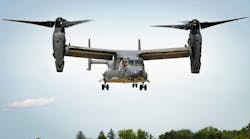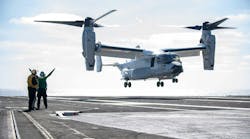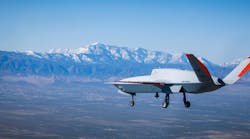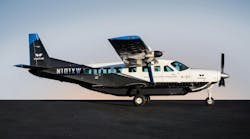May 29--It's the end of an era.
The last plane to undergo maintenance inside Boeing Wichita's facility, an E-4B, started its engines and took off late Thursday afternoon. It flew to the south, then gracefully turned back north for a final goodbye pass before disappearing from sight.
A fixture in Wichita since 1927, Boeing once employed as many as 40,000 people here. It was a vital center of military production during World War II, building trainers and the B-29 Superfortress and helping the city become known as the Air Capital of the World.
Before Thursday's departure, Boeing employees completed maintenance on the white and blue aircraft for the Air Force. The modified Boeing 747 was undergoing final test flights and preparations for delivery, according to information from the Air Force.
It was headed for Offutt Air Force Base outside Omaha, an Air Force spokesman said.
The next E-4B scheduled for maintenance will arrive at Boeing's facility in San Antonio in late June instead of Wichita. Future maintenance on VC-25s, commonly known as Air Force One when the president is on board, will also be done in an enlarged hangar in San Antonio.
A Boeing spokeswoman did not return a call Thursday for comment.
Boeing announced in January 2012 that it was closing its Wichita defense plant and moving engineering and project management duties to Oklahoma City; modification, maintenance and repair work to San Antonio, and tanker work to the Puget Sound area of Washington state.
Chuck Younts Sr., joined his son, Chuck, and daughter-in-law, Kim, on the balcony at the Kansas Aviation Museum on Thursday to watch the airplane take off.
The elder Younts said he joined Boeing Wichita in 1951 at age 18 making 95 cents an hour. His father, brother and other family members worked for Boeing.
He said he retired after 50 years of service from Boeing's Everett, Wash., site in December 2001.
"The work that has been accomplished here has been outstanding," Younts said. "I hate to see the work go out of state when it should stay in Wichita. To be here to see it today is tremendous."
The younger Younts, a third-generation Boeing employee, said he joined the company in 1982. He retired a year ago from the Wichita site where he worked in flight avionics.
He teared up after watching the plane depart.
"It's just sad to see -- proud -- but sad," the younger Younts said. "I have so much faith and respect for the people who worked here and their knowledge and their can-do spirit to make it happen."
The decision to close the facility in south Wichita came as military programs at the plant matured, came to a close or were winding down and prospects for new work in Wichita were limited, company officials have said. Boeing has put its sprawling facilities up for sale.
Boeing primarily performed maintenance and modification of military and government aircraft in Wichita, including work on the E-4B Advanced Airborne Command Post and presidential airlift programs, commonly known as Air Force One.
In 2004, Boeing -- which employed 12,400 people in Wichita at the time -- sold its commercial aircraft business to Onex Corp., which formed Spirit AeroSystems.
When Boeing decided to close its Wichita plant entirely, it employed 2,160 people. It employs about 50 hourly workers today, said Frank Molina, president and directing business representative of the Machinists Union District 70.
"I'm speechless on this," Molina said of the final departure. "It's the end of an era. It's really sad to see what started up Wichita, Kansas, is finally coming to a close.
"But behind them, we have a lot of great aircraft companies and manufacturers that are world class, and they are now setting the stage for aviation."
The Air Force has a long relationship with the people of Wichita, said Zane Boatright, deputy chief, VIP/SAM & Special Duty Division for the Air Force Life Cycle Management Center.
"We greatly appreciate their years of dedicated service," Boatright said in a statement. "Our Division is responsible for ensuring the safe operation of some extremely important aircraft and we've always answered that charge. We know that is due in large part to the tremendous support we have received there."
The E-4B is designed to be used as a survivable command post by the National Command Authority in the event of a conflict, including nuclear war. It also is used for VIP transport and support to the Federal Emergency Management Agency to provide communications for relief efforts after natural disasters, such as hurricanes and earthquakes.
Reach Molly McMillin at 316-269-6708 or [email protected]. Follow her on Twitter: @mmcmillin.
Copyright 2014 - The Wichita Eagle




